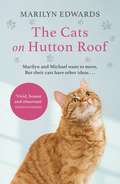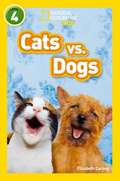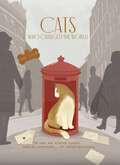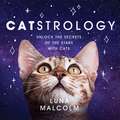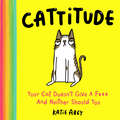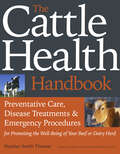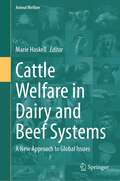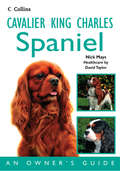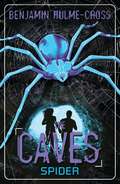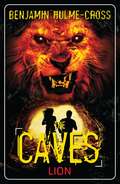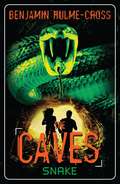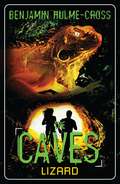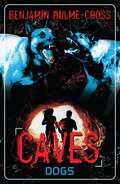- Table View
- List View
The Cats of Moon Cottage
by Marilyn Edwards'My all-time favourite cat book' Jacqueline WilsonIndependent Septi is very much his own cat, established as lord of his domain within Moon Cottage. When Otto, a tiny delicate tortoiseshell kitten, joins the household, she must set out to win Septi over - in her own unique way. Written with unending humour and warmth, Marilyn Edwards' Moon Cottage cat memoirs perfectly capture the highs and lows of living with cats, and pay a touching tribute to the joyous and loving relationship we share with our feline companions. The books are also beautifully illustrated throughout by Peter Warner, the designer of the world-famous Whiskas cat.**Fully illustrated throughout**'At once engaging and uplifting - a colourful series that celebrates the many ways animals enrich our relationships and our lives' Karin Slaughter'Cat lovers will adore this book . . . A tender story of love between the author and her cats' Celia Haddon'All the many delights and a few of the heartaches of a life with cats are told with charm and wit. A vivid, honest, observant and involving book' Desmond Morris
Cats of the National Trust
by Amy Feldman National Trust BooksFrom Winston Churchill's 'Jock' to John Lennon's 'Tim', this charming guide celebrates the pets doted upon by cat-lovers associated with the National Trust, alongside the cats that patrol the Trust's houses and gardens today.
Cats on Catnip: A Grow-your-own Catnip Kit (Miniature Editions Ser.)
by Andrew MarttilaAndrew Marttila has been a professional animal photographer for the past five years and most of that time has been dedicated to photographing cats exclusively. With his set-up he's able to capture wonderful split-second images of'cat's most abandoned expressions as they enjoy every cats favourite treat, catnip. Andrew rescues and raises orphan kittens with his partner Hannah Shaw (the internet's famous Kitten Lady), and many of the models were hand-raised by Andrew and Hannah from newborns. Catnip, or Nepeta cataria, grows wild in many parts of the world and is extremely easy to grow at home in most climates. It's part of the mint family and contained within the bulbs, stems, and leaves is an oil called nepetalactone. Once eaten, rolled on, or crushed, the oil binds to the cat's nasal receptors and stimulates a response that affects a number of areas in the brain, including the hypothalamus and amygdala, two regions that are key in regulating emotional and behavioral responses to stimuli. This produces a mild euphoric effect and typically lasts about ten to twenty minutes.Catnip is non-addictive and harmless and provides a temporary respite from your cat's gruelling workload of napping all day.
The Cats on Hutton Roof
by Marilyn Edwards'A colourful series that celebrates the many ways animals enrich our relationships and our lives' Karin SlaughterMarilyn and husband Michael have known many happy years at Moon Cottage, with their cats Fannie, Titus and Pushkin. However, the time has come to make a dream come true, and for the family to move to beautiful Cumbria.However, as all cat-lovers will know, the feline companions in our lives do not always share our dreams, and getting Fannie, Titus and Pushkin on board with the change will be its very own challenge. . .Capturing the highs and the lows which come with living with cats, The Moon Cottage cat series is a testimony and a tribute to that unique and rewarding relationship which exists between humans and their feline companions in which cats, in their splendid complexity, remain among us, but not of us.**Fully illustrated throughout**Praise for the Moon Cottage cat series:'My all-time favourite cat book' Jacqueline Wilson'Cat lovers will adore this book . . . A tender story of love between the author and her cats' Celia Haddon'All the many delights and a few of the heartaches of a life with cats are told with charm and wit. A vivid, honest, observant and involving book' Desmond Morris
Cats vs Dogs: Misbehaving mammals, intellectual insects, flatulent fish and the great pet showndown
by New ScientistInformative, surprising and hilarious, New Scientist tackles questions about the animal kingdom from readers in the magazine's popular 'Last Word' column. This book brings together the best of the bunch:Why do millipedes have so many legs? Will we ever speak dolphin?Do geese always fly in a V formation?And, at long last, a scientific verdict on the ultimate question: cats or dogs?
Cats vs. Dogs: Level 4 (National Geographic Readers Ser.)
by Elizabeth Carney National Geographic Kids StaffNational Geographic Primary Readers pair magnificent National Geographic photographs with engaging text by skilled authors to help your child learn to read. Developed by education experts, this series of books for beginner readers is spread across four levels: Early Reader, Becoming Fluent, Becoming Independent and Independent Reader. Ever since the first youngster in history had a pet, cats vs. dogs has been an intensely debated issue at lunch tables around the world. Which one’s better? Smarter? This National Geographic Kids Level 4 Reader presents the facts in a fun and informative fashion. With fascinating and accessible text, children will love debating and deciding the answer to this question for themselves. Level 4: Independent Reader books are perfect for kids who are reading on their own with ease and are ready for more challenging vocabulary with varied sentence structures. They are ideal for readers of White and Lime book bands for guided reading.
Cats Who Changed the World: 50 cats who altered history, inspired literature... or ruined everything
by Dan JonesThe cat-tastic companion to Dogs Who Changed the World.50 awe-inspiring stories of cats who have altered history, inspired art and literature, reunited lost lovers, saved lives, or just ruined everything. These inspiring, humorous, heart-breaking, or just plain weird stories reveal why cats have earned their place as our weirdest, most endearing companions, and how our fascination with them is age-old. Along the way you'll meet Félicette, the first moggy in space; Unsinkable Sam, a sea-faring feline; Tama, the railway cat who saved a community; and Snowball, the crime-solving cat.Cats Who Changed the World celebrates the unique relationship we have with our feline best friends, from contemporary times to all throughout history.
Catstrology: Unlock the Secrets of the Stars with Cats
by Luna MalcolmWith the help of a collection of sweet and hilarious cat pictures, CATSTROLOGY will unlock all the secrets of the stars that you need to know, including...- Each of the signs at their best and worst (and the perfect cat to illustrate them)- The common traits of each element and modality in the zodiac- What do you and your 'sister sign' have in common? Find out, with the perfect cat picture to complement it...- And of course: the right cat for you, based on your star sign!
Cattitude: Your Cat Doesn't Give A F*** And Neither Should You
by Katie AbeyA hilarious, colourful collection of straight-talking, no-nonsense advice from very sassy cats
Cattle and Sheep Medicine: Self-Assessment Color Review (Veterinary Self-Assessment Color Review Series)
by Philip R. ScottThe new edition of Cattle and Sheep Medicine incorporates over 250 new clinical cases divided equally between cattle and sheep. The cases appear randomly to reflect real life practice and are presented as a set of integrated questions, photographs and detailed explanatory answers-to educate and not just to test. New images have been added for all c
Cattle and Sheep Medicine: Self-Assessment Color Review (Veterinary Self-Assessment Color Review Series)
by Philip R. ScottThe new edition of Cattle and Sheep Medicine incorporates over 250 new clinical cases divided equally between cattle and sheep. The cases appear randomly to reflect real life practice and are presented as a set of integrated questions, photographs and detailed explanatory answers-to educate and not just to test. New images have been added for all c
Cattle Behaviour and Welfare
by Clive PhillipsCattle are one of our major domesticated animals, a higher mammal with complex mental and physical needs. The benefit of a knowledge of cattle behaviour means veterinarians and stockpeople can recognise abnormal behaviour signs for disease diagnosis and indication of an inadequate environment. This book replaces the book Cattle Behaviour, written by the same author and published by Farming Press in 1993. The text has been revised and updated and four new chapters on cattle welfare have been added. The main interest of many reading a book on behaviour is its relation to the welfare of the species, so the combination of welfare and behaviour is a logical one.
The Cattle Health Handbook
by Heather Smith ThomasIn this practical guide, Heather Smith Thomas provides easy-to-execute solutions for a variety of common medical situations that can afflict your animals, including bacterial diseases, parasites, and nutritional deficiencies.
Cattle Plague: A History
by Clive SpinageCattle Plague: A History is divided into five sections, dealing with the nature of the virus, followed by a chronological history of its occurrence in Europe from the Roman Empire to the final 20th century outbreaks; then administrative control measures through legislation, the principal players from the 18th century, followed by an analysis of some effects, political, economic and social. Then follows attempts at cure from earliest times encompassing superstition and witchcraft, largely Roman methods persisting until the 19th century; the search for a cure through inoculation and the final breakthrough in Africa at the end of the 19th century. The last section covers the disease in Asia and Africa. Appendices cover regulations now in force to control the disease as well as historical instructions, decrees and statutes dating from 1745-1878.
Cattle Welfare in Dairy and Beef Systems: A New Approach to Global Issues (Animal Welfare #23)
by Marie HaskellThis book provides a comprehensive coverage of all aspects of the welfare of cattle. It starts with a consideration of animal welfare science and its application to the management of cattle and moves through to discussions of the challenges and opportunities for providing good welfare for cattle in farming and husbandry systems across the globe. The first section comprises three chapters that discuss the social, behavioural and physiological methods that can be used to assess welfare in cattle. The second section considers the welfare challenges of beef and dairy cattle in extensive and intensive systems. The third section details welfare challenges such as at slaughter, during handling and in the growing period and details solutions such as the use of sensors and application of animal breeding techniques. The final section addresses welfare challenges and solutions in achieving sustainability, in smallholder farms in Africa and new entrant dairying in Asia and cow shelters in India. This work makes a valuable contribution to the field of animal welfare and modern livestock farming. It is a must-read for researchers and students, veterinarians as well as industry personnel and informed farmers and producers.
Catwatching (Isis Large Print Ser.)
by Desmond MorrisThe personality of the cat is a fascinating mixture of affection, domesticity and active independence. You may think you know your cat as he purrs in your lap, but come across your pet in the street on a dark night and you might think that Bagpuss suffers from a dual personality.Every single feline pet carries an inheritance of amazing sensory capacities, vocal utterances, body language and territorial displays. By answering such questions as 'what does a cat signal with its ears? 'why does a cat rub up against your leg?' and 'why does a cat swing its head from side to side when staring at its prey?', Desmond Morris decodes the private world of the cat. Your cat is full of surprises and our finest zoologist is about to reveal their secrets in this beautifully repackaged edition of a much loved bestseller.
Cavalier King Charles Spaniel: An Owner’s Guide
by Nick MaysA comprehensive guide to all aspects of owning a Cavalier King Charles Spaniel, this highly illustrated book is full of practical information and expert advice for pet owners and breeders.
Cave Biodiversity: Speciation and Diversity of Subterranean Fauna
by J. Judson WynneA deep-dive into the evolutionary biology, biogeography, and conservation of the most elusive subterranean creatures in the world.Far from the austere, sparsely populated ecosystems often conjured in the imagination, caves host some of the most mysterious and biodiverse natural systems in the world. Subterranean environments, however, are the least explored terrestrial habitats, contributing to misconceptions about their inhabitants. Edited by cave scientist and conservation ecologist Dr. J. Judson Wynne, Cave Biodiversity explores both the evolution and the conservation of subterrestrial-dwelling fauna. Covering both vertebrates and invertebrates, including mollusks, fishes, amphibians, arthropods, and other troglobionts, this volume brings together ichthyologists, entomologists, ecologists, herpetologists, and conservationists to provide a nuanced picture of life beneath the earth's surface. Broad chapters covering biotic and abiotic factors that influence evolution and support biodiversity precede chapters dedicated to specific taxa, highlighting phylogenetics and morphology, and delving into zoogeography, habitat, ecology, and dispersal mechanisms for each. Considerations for conservation of these fascinating, often bizarre, and often highly sensitive subterranean creatures are emphasized throughout.Cave Biodiversity aims to synthesize the principles of subterranean evolutionary biology and diversity through in-depth case studies of some of the most captivating and imperiled taxonomic groups in the world. Employing a multidisciplinary approach involving systematics, genetics, ecology, biogeography, evolutionary biology, and conservation science, Cave Biodiversity will be of keen interest to evolutionary biologists, ecologists, conservation biologists, and cave scientists, as well as advanced undergraduate and graduate students. Contributors: Maria E. Bichuette, Evin T. Carter, Prosanta Chakrabarty, Kenneth James Chapin, Danté B. Fenolio, Andrew G. Gluesenkamp, Jozef Grego, Francis G. Howarth, Leonardo Latella, Matthew L. Niemiller, Karen A. Ober, T. Keith Philips, John G. Phillips, Stuart Pimm, Daphne Soares, J. Judson Wynne, and Yahui Zhao.
Cave Biodiversity: Speciation and Diversity of Subterranean Fauna
by J. Judson WynneA deep-dive into the evolutionary biology, biogeography, and conservation of the most elusive subterranean creatures in the world.Far from the austere, sparsely populated ecosystems often conjured in the imagination, caves host some of the most mysterious and biodiverse natural systems in the world. Subterranean environments, however, are the least explored terrestrial habitats, contributing to misconceptions about their inhabitants. Edited by cave scientist and conservation ecologist Dr. J. Judson Wynne, Cave Biodiversity explores both the evolution and the conservation of subterrestrial-dwelling fauna. Covering both vertebrates and invertebrates, including mollusks, fishes, amphibians, arthropods, and other troglobionts, this volume brings together ichthyologists, entomologists, ecologists, herpetologists, and conservationists to provide a nuanced picture of life beneath the earth's surface. Broad chapters covering biotic and abiotic factors that influence evolution and support biodiversity precede chapters dedicated to specific taxa, highlighting phylogenetics and morphology, and delving into zoogeography, habitat, ecology, and dispersal mechanisms for each. Considerations for conservation of these fascinating, often bizarre, and often highly sensitive subterranean creatures are emphasized throughout.Cave Biodiversity aims to synthesize the principles of subterranean evolutionary biology and diversity through in-depth case studies of some of the most captivating and imperiled taxonomic groups in the world. Employing a multidisciplinary approach involving systematics, genetics, ecology, biogeography, evolutionary biology, and conservation science, Cave Biodiversity will be of keen interest to evolutionary biologists, ecologists, conservation biologists, and cave scientists, as well as advanced undergraduate and graduate students. Contributors: Maria E. Bichuette, Evin T. Carter, Prosanta Chakrabarty, Kenneth James Chapin, Danté B. Fenolio, Andrew G. Gluesenkamp, Jozef Grego, Francis G. Howarth, Leonardo Latella, Matthew L. Niemiller, Karen A. Ober, T. Keith Philips, John G. Phillips, Stuart Pimm, Daphne Soares, J. Judson Wynne, and Yahui Zhao.
The Caves: The Caves 3 (The Caves)
by Benjamin Hulme-CrossIn the future, convicted Teens have a choice. Life in prison, or taking their chance in The Caves. Two Teens are dropped onto a remote island, along with a cyborg monster. If they kill the cyborg, they go free. If they fail, they die. Zak, the wild boy of the island, watches the Teens. Sometimes he helps them. Sometimes he doesn't.Highly readable, exciting books that take the struggle out of reading, Caves encourages and supports reading practice by providing gripping, age-appropriate stories for struggling and reluctant readers or those with English as an additional language aged 12+, at a manageable length (32 pages) and reading age (6+). This series can be read in any order. Produced in association with reading experts at Catch Up, a charity which aims to address underachievement caused by literacy and numeracy difficulties.Book band: PurpleIdeal for age: 12+Reading age: 6
The Caves: The Caves 5 (The Caves)
by Benjamin Hulme-CrossIn the future, convicted Teens have a choice. Life in prison, or taking their chance in The Caves. Two Teens are dropped onto a remote island, along with a cyborg monster. If they kill the cyborg, they go free. If they fail, they die. Zak, the wild boy of the island, watches the Teens. Sometimes he helps them. Sometimes he doesn't.Highly readable, exciting books that take the struggle out of reading, Caves encourages and supports reading practice by providing gripping, age-appropriate stories for struggling and reluctant readers or those with English as an additional language aged 12+, at a manageable length (32 pages) and reading age (6+). This series can be read in any order. Produced in association with reading experts at Catch Up, a charity which aims to address underachievement caused by literacy and numeracy difficulties.Book band: PurpleIdeal for ages: 12+Reading age: 6
The Caves: The Caves 6 (The Caves)
by Benjamin Hulme-CrossIn the future, convicted Teens have a choice. Life in prison, or taking their chance in The Caves. Two Teens are dropped onto a remote island, along with a cyborg monster. If they kill the cyborg, they go free. If they fail, they die. Zak, the wild boy of the island, watches the Teens. Sometimes he helps them. Sometimes he doesn't.Highly readable, exciting books that take the struggle out of reading, Caves encourages and supports reading practice by providing gripping, age-appropriate stories for struggling and reluctant readers or those with English as an additional language aged 12+, at a manageable length (32 pages) and reading level (6+). This series can be read in any order. Produced in association with reading experts at Catch Up, a charity which aims to address underachievement caused by literacy and numeracy difficulties.Book band: PurpleIdeal for ages: 12+Reading age: 6
The Caves: The Caves 1 (The Caves)
by Benjamin Hulme-CrossIn the future, convicted Teens have a choice. Life in prison, or taking their chance in The Caves. Two Teens are dropped onto a remote island, along with a cyborg monster. If they kill the cyborg, they go free. If they fail, they die. Zak, the wild boy of the island, watches the Teens. Sometimes he helps them. Sometimes he doesn't.Highly readable, exciting books that take the struggle out of reading, Caves encourages and supports reading practice by providing gripping, age-appropriate stories for struggling and reluctant readers or those with English as an additional language aged 12+, at a manageable length (32 pages) and reading age (6+). This series can be read in any order. Produced in association with reading experts at CatchUp, a charity which aims to address underachievement caused by literacy and numeracy difficulties.Book band: PurpleIdeal for ages: 12+Reading age: 6
The Caves: The Caves 2 (The Caves)
by Benjamin Hulme-CrossIn the future, convicted Teens have a choice. Life in prison, or taking their chance in The Caves. Two Teens are dropped onto a remote island, along with a cyborg monster. If they kill the cyborg, they go free. If they fail, they die. Zak, the wild boy of the island, watches the Teens. Sometimes he helps them. Sometimes he doesn't.Highly readable, exciting books that take the struggle out of reading, Caves encourages and supports reading practice by providing gripping, age-appropriate stories for struggling and reluctant readers or those with English as an additional language aged 12+, at a manageable length (32 pages) and reading age (6+). This series can be read in any order. Produced in association with reading experts at Catch Up, a charity which aims to address underachievement caused by literacy and numeracy difficulties.Book band: PurpleIdeal for age: 12+Reading age: 6
The Caves: The Caves 3 (The Caves)
by Benjamin Hulme-CrossIn the future, convicted Teens have a choice. Life in prison, or taking their chance in The Caves. Two Teens are dropped onto a remote island, along with a cyborg monster. If they kill the cyborg, they go free. If they fail, they die. Zak, the wild boy of the island, watches the Teens. Sometimes he helps them. Sometimes he doesn't.Highly readable, exciting books that take the struggle out of reading, Caves encourages and supports reading practice by providing gripping, age-appropriate stories for struggling and reluctant readers or those with English as an additional language aged 12+, at a manageable length (32 pages) and reading age (6+). This series can be read in any order. Produced in association with reading experts at Catch Up, a charity which aims to address underachievement caused by literacy and numeracy difficulties.Book band: PurpleIdeal for age: 12+Reading age: 6



